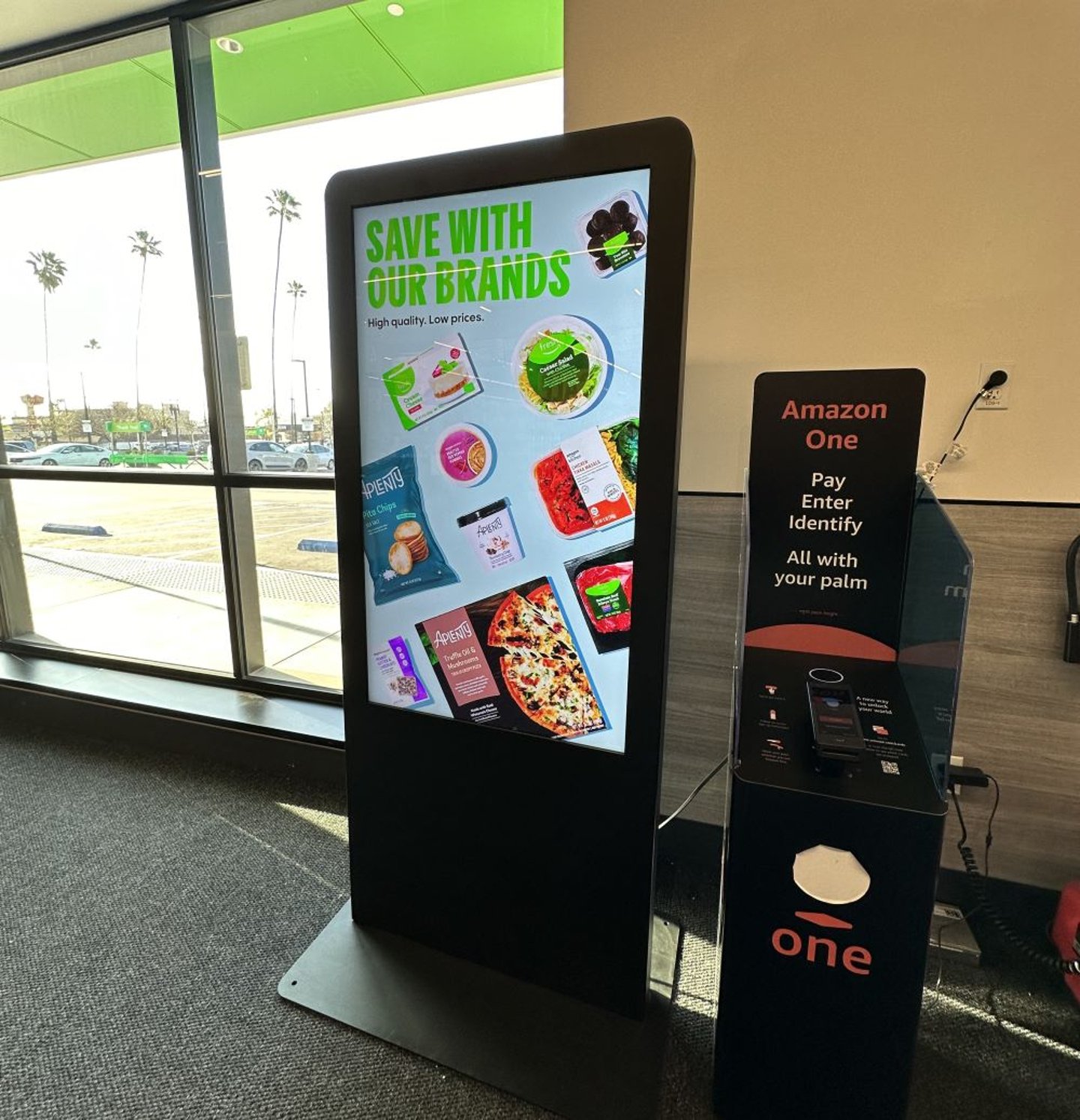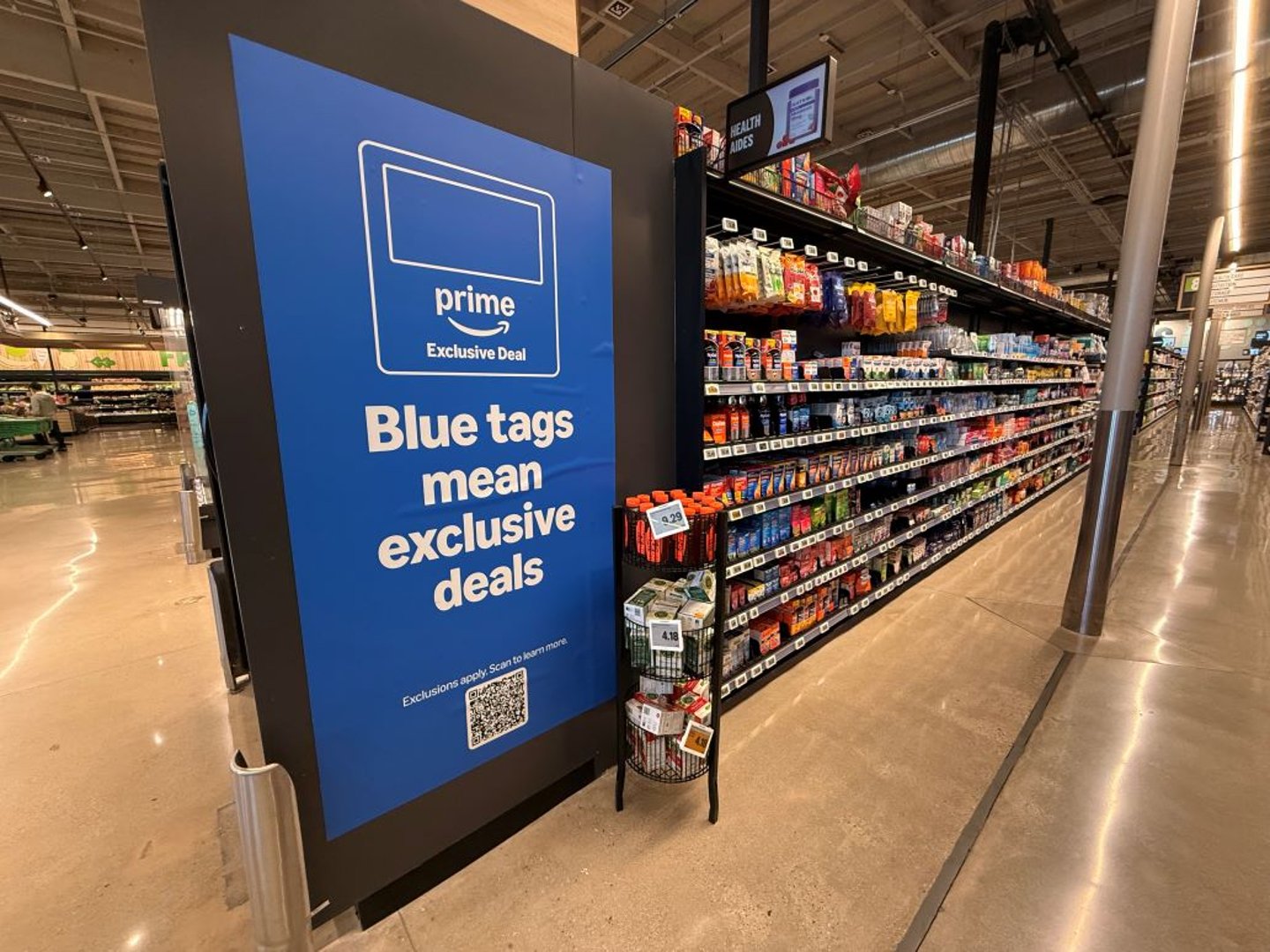Deep Dive Into Amazon’s Grocery Revolution
It has been said many times before, but Amazon is about to drastically change the grocery business.
What hasn’t been said many times before is that this transformative change is coming because the company recently elevated the brilliant CEO of Whole Foods Market, Jason Buechel, to oversee the worldwide grocery business.
Since Buechel took the top job at Whole Foods Market in 2022, the Austin, Texas-based retailer has driven higher profitability and sales for Amazon’s physical stores segment. This has put the company in a good position to continue to experiment with its grocery strategy as it looks to build a mass omni-grocery format that offers a great perishable experience and meets the needs of changing demographics looking for value, convenience and healthier options at grocery.
Expanding Grocery Ecosystem
Early last month, Amazon CEO Andy Jassy published his annual letter to shareholders in which for the first time, he neglected to use the word “grocery” once. That’s a telling omission for a whole host of reasons (more on that later), but it’s clear that grocery continues to be a big growth opportunity for the company.
As of fiscal 2024, Seattle-based Amazon has built an increasingly formidable, multifaceted grocery ecosystem that spans four banners:
- Amazon Fresh (62 locations)
- Whole Foods Market (523 locations, including the new Daily Shop format)
- Amazon Go (15 locations)
- Amazon Grocery (one location)
- Plus, online grocery through Amazon.com and third-party sellers
With total company revenue reaching $638 billion in 2024 – an 11% year-over-year increase – Amazon’s grocery segment is becoming an increasingly important pillar of its North American growth engine. Specifically, the company has increased revenue in its physical stores segment 12% since 2022. More than ever, Amazon sees brick-and-mortar grocery as a vital segment where it can bring its customer obsession, operational excellence and relentless innovation to life.
Over the past year, Amazon significantly expanded its grocery operations, introducing a range of initiatives aimed at enhancing convenience, affordability and integration across its platforms, including:
Amazon Fresh: In 2024, Amazon decided to redesign many of its Amazon Fresh banners across the United States. New layouts expanded selection in dairy, snacks and international foods, all in response to customer feedback. More than 90% of surveyed customers reported being “very satisfied” with the refreshed experience. These updates not only reflect better curation, but also aim to deliver a friendlier, more intuitive shopping environment. Amazon Fresh stores today offer expanded prepared foods, enhanced bakery sections, and updated signage to help customers navigate easily.
Amazon Grocery: This is a small-format concept piloted under the same roof as a Whole Foods Market in Chicago. Offering 3,500 curated products in a 3,800-square-foot space, the Amazon Grocery format supports quick trips and adds incremental value to Whole Foods shoppers. By integrating this new model, Amazon is addressing the demand for convenient, quick-stop grocery shopping – a growing trend among busy urban consumers. Early indicators show strong customer interest in the concept, and executives are evaluating broader rollout potential.
Whole Foods Market Daily Shop: Whole Foods recently introduced its Daily Shop mini-market concept, with the first store opening on Manhattan’s Upper East Side. These approximately 9,100-square-foot stores focus on grab-and-go meals, snacks and essentials, aiming to provide quick and convenient options for urban dwellers. Two more of these store locations have already been announced.
[RELATED: Your Burning Whole Foods Market Questions Answered]
Amazon Saver: To address inflationary food prices, Amazon launched Amazon Saver, a budget-friendly private label line. Most items are priced under $5, with Prime members receiving an additional 10% discount. Amazon Saver joins what has become a large portfolio of grocery private brands from Amazon, including Amazon Fresh (fresh produce, dairy offerings, bakery items and pantry staples, available both online and in Amazon Fresh physical stores); Amazon Kitchen (ready-to-eat meals, salads and deli items); Happy Belly (snacks, nuts, granola and beverages, aiming to deliver quality and taste at competitive prices); Aplenty (indulgent snacks and sweets, including cookies, crackers and confections, crafted with unique flavors); and 365 by Whole Foods Market (Whole Foods’ flagship private label, known for organic and natural products, now widely available through Amazon’s platforms).
By investing in private brands, Amazon is not only offering trusted products at great prices, but also building customer loyalty, as customers who purchase private brands are more likely to return to shop at Amazon.
Expanded Prime Savings: Amazon expanded Prime member discounts to more than 3,000 grocery items, both in-store and online at Amazon Fresh. This includes weekly deals offering up to 50% off on rotating selections, enhancing value for Prime members.
Unlimited Grocery Delivery Subscription: Amazon introduced a new subscription model for grocery delivery in 2024. Prime members can opt for unlimited grocery deliveries at $9.99 per month, while customers with an EBT card can subscribe for $4.99 per month. This service is available in more than 3,500 cities and towns across the United States, with the aim of providing affordable and convenient delivery options
Unified Fulfillment Networks: In 2024, Amazon began integrating the fulfillment networks of Whole Foods Market and Amazon Fresh. This strategy aims to streamline online fulfillment and provide a more cohesive shopping experience, allowing customers to access a broader range of products through a single platform.
In 2024, Amazon certainly demonstrated how serious it is about becoming a destination for grocery, launching new tools, expanding grocery categories and enhancing delivery logistics to better serve millions of shoppers.
Whole Foods Market’s Evolution
Whole Foods Market remains the crown jewel of Amazon’s physical grocery footprint. In 2024, Whole Foods continued sharpening its focus on enhancing its market presence with expansion and new formats, sustainability efforts, and support for emerging brands.
Last year, the retailer expanded its full-size store footprint, launching new locations in Boynton Beach, Fla.; Nashua, N.H.; and Stamford, Conn. Additional stores opened in Hyannis, Mass., and Phoenix, with the latter being a relocation of an existing store. The company has revealed plans to open 30 new stores annually, with more than 75 new locations in development across the United States, the United Kingdom and Canada.
As noted earlier, in 2024, Whole Foods introduced the Whole Foods Market Daily Shop banner, a smaller format designed for urban areas. Plans are underway to open additional Daily Shops in New York City and Washington, D.C.
Meanwhile, Whole Foods’ integration with Amazon’s Prime membership continues to deepen through exclusive discounts and savings for loyal shoppers. This partnership is creating stronger engagement among Amazon’s most loyal base – Prime members – and driving higher spend both online and in-store.
Whole Foods is also playing a more vital role in Amazon’s broader delivery network. Today, customers can access two-hour delivery and 30-minute pickup windows, ensuring that fresh groceries meet the speed expectations shaped by Amazon’s e-commerce legacy.
Meanwhile, Whole Foods’ new stores and remodels mirror the data-driven, customer-centric ethos at the heart of Amazon’s broader approach to grocery. New layouts, enhanced checkout technology and an improved assortment are helping Whole Foods differentiate itself in an increasingly competitive organic foods space. Plus, a renewed emphasis on value and promotions, while maintaining its brand heritage regarding quality and wellness, is paying off for Amazon’s bottom line.
When it comes to higher purpose, Whole Foods recently launched a nationwide initiative to reduce food waste by offering “Surprise Bags” of surplus food items at more than 450 stores across the United States. These bags, available through the Too Good To Go app, provide customers with discounted quality products while helping to minimize waste.
Additionally, Whole Foods has expanded its Sourced for Good program beyond produce and floral to include grocery items like coffee blends. This initiative collaborates with third-party certifiers to ensure responsible sourcing and support for farm workers and communities.
Finally, Whole Foods’ Local and Emerging Accelerator Program (LEAP) continued to support innovative food brands in 2024. The retailer opened applications for its Early Growth cohort, offering mentorship, educational programming and potential shelf placement in stores. Participants also became eligible for a $25,000 equity investment from a donor-advised fund managed by the Austin Community Foundation.
Letter to Shareholders
While Jassy’s 2025 shareholder letter failed to mention anything about grocery, it did explain the philosophy behind the company’s grocery strategy.
“Amazon is a Why company,” Jassy wrote. “We ask why, and why not, constantly. It helps us deconstruct problems, get to root causes, understand blockers and unlock doors that might have previously seemed impenetrable.”
This ethos is deeply embedded in Amazon’s grocery strategy. Rather than simply replicating traditional supermarket models, Amazon questions every aspect of the customer experience: Why does online grocery have to be complex? Why can’t fresh and dry be delivered together? Why can’t grocery delivery costs be lower? Why can’t underserved shoppers have expanded access to quality grocery products?
The Why culture also informs Amazon’s diverse experimentation with formats, fulfillment strategies and assortment decisions — all in service of continually improving the grocery shopping journey. Amazon’s willingness to question sacred industry assumptions is what sets it apart from traditional grocery peers that often optimize incrementally rather than reimagine.
In 2024, Amazon solidified its position as a serious contender in grocery retail. Through its distinctive combination of customer obsession, operational excellence and willingness to invent new models, Amazon is shaping a future where grocery shopping is faster, simpler, more personalized and more accessible.
Whole Foods continues to set the standard for premium natural and organic foods, while Amazon Fresh evolves to meet mainstream grocery needs. Together, these platforms allow Amazon to serve every segment of the grocery shopper spectrum – from value-focused families to health-conscious Millennials to busy professionals.
For grocery executives watching Amazon’s next moves, the message is clear: The future of grocery won’t simply be an evolution of today’s models, it will be a reinvention – one relentlessly driven by the pursuit of “Why not?” and powered by an organization built to ask the right questions, move fast and invent boldly.






